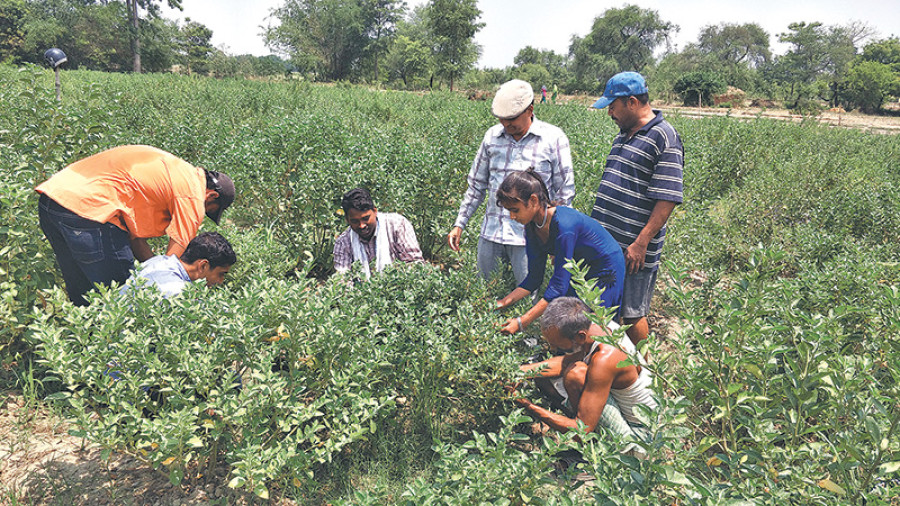Money
High returns lure farmers to growing ashwagandha
Locals of Rupandehi have switched to commercial farming of Withania somnifera, a medicinal herb commonly known as ashwagandha, because of higher returns compared to traditional crops.
Madhav Dhungana
Locals of Rupandehi have switched to commercial farming of Withania somnifera, a medicinal herb commonly known as ashwagandha, because of higher returns compared to traditional crops.
Babu Ram Yadav of Mayadevi Rural Municipality started commercial farming of ashwagandha last year, and seeing his income jump several-fold, other farmers began to follow his lead.
As ashwagandha starts bearing fruit within six months of planting and fetches a high price, locals of the district have been encouraged to grow the medicinal herb commercially.
“I used to earn Rs150,000 annually when cultivating traditional crops like wheat and paddy on my 1 bigha of land,” said Yadav. “After planting ashwagandha on the same plot of land, I earned Rs2.1 million within a year selling seeds of the medicinal herb.”
Following the footsteps of Yadav, 300 farmers of Rupandehi district have started commercial farming of ashwagandha. Tryambakam Herbs Cooperative of Bhairahawa is helping the farmers in the district with technical support to start commercial farming of ashwangandha.
The cooperative assists member farmers by providing saplings of the medicinal herb and providing training to grow them. It also buys their harvests at a good price. The cooperative pays farmers Rs3,000 per kg of ashwagandha seeds. “We are planning to expand commercial ashwagandha farming in a massive way,” said Badri Gautam, chairman of Tryambakam Cooperative. “We are also working to arrange crop insurance.” If the government prioritizes the farming of the medicinal herb instead of traditional crops, it will greatly improve the quality of life of the farmers, according to Gautam.
Ashwagandha is considered to be a stimulant. It is widely used to manufacture aphrodisiacs and memory power enhancing drugs. The herb is also used in manufacturing homeopathic medicines.
The 80 ayurvedic drug companies established in Nepal alone buy ashwagandha worth Rs1 billion annually. Its demand is very high in India and China too, according to the people involved in ayurvedic drug companies.
“If we increase production of the medicinal herb in Nepal, we can export its seeds to India for as high as IRs5,000 per kg,” said Gautam. “We can get an equally good price by exporting the herb to China.”




 17.12°C Kathmandu
17.12°C Kathmandu













